Intel Pentium Gold G5600 And G5400 Review: Four Threads Under $100
Why you can trust Tom's Hardware
Office & Productivity
Adobe Creative Cloud
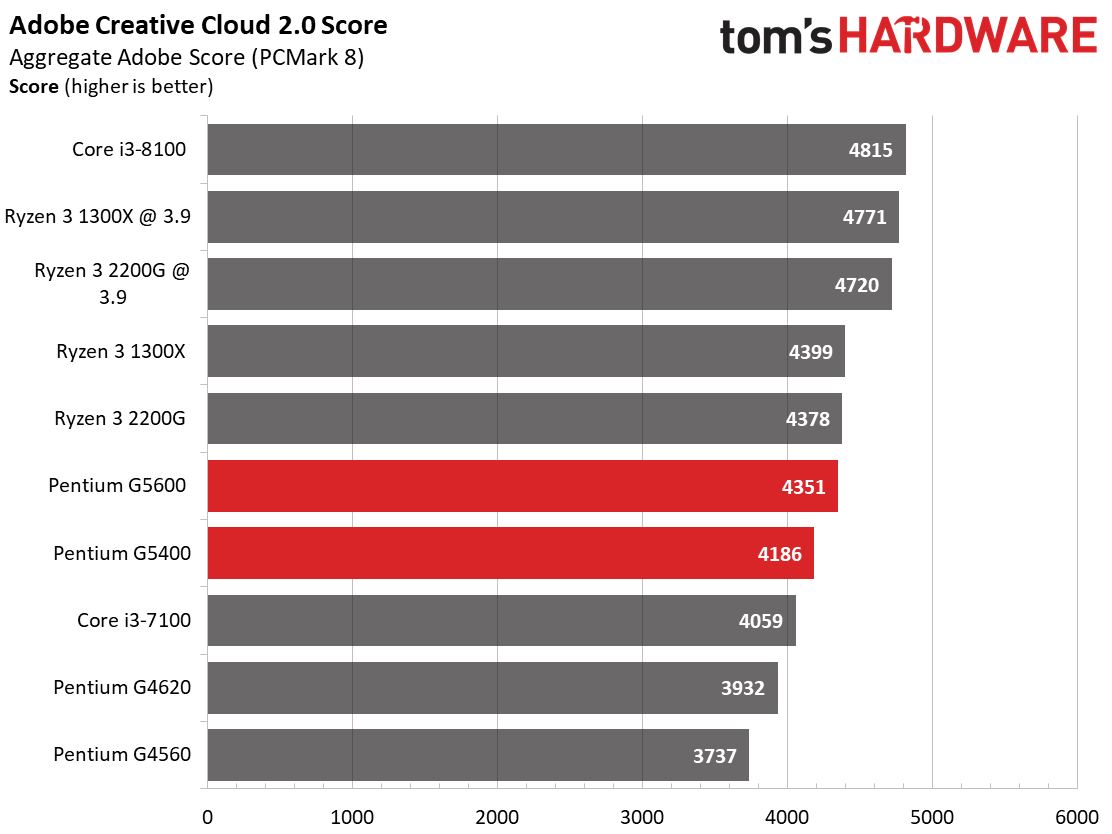
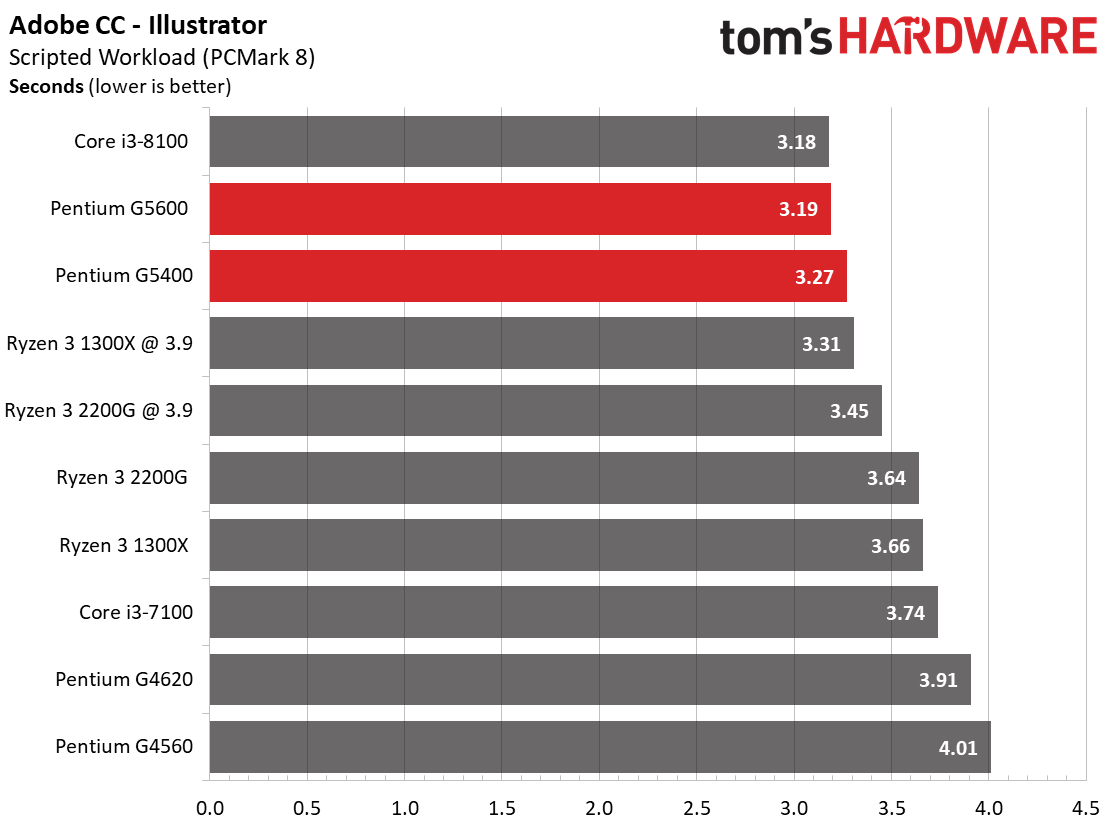
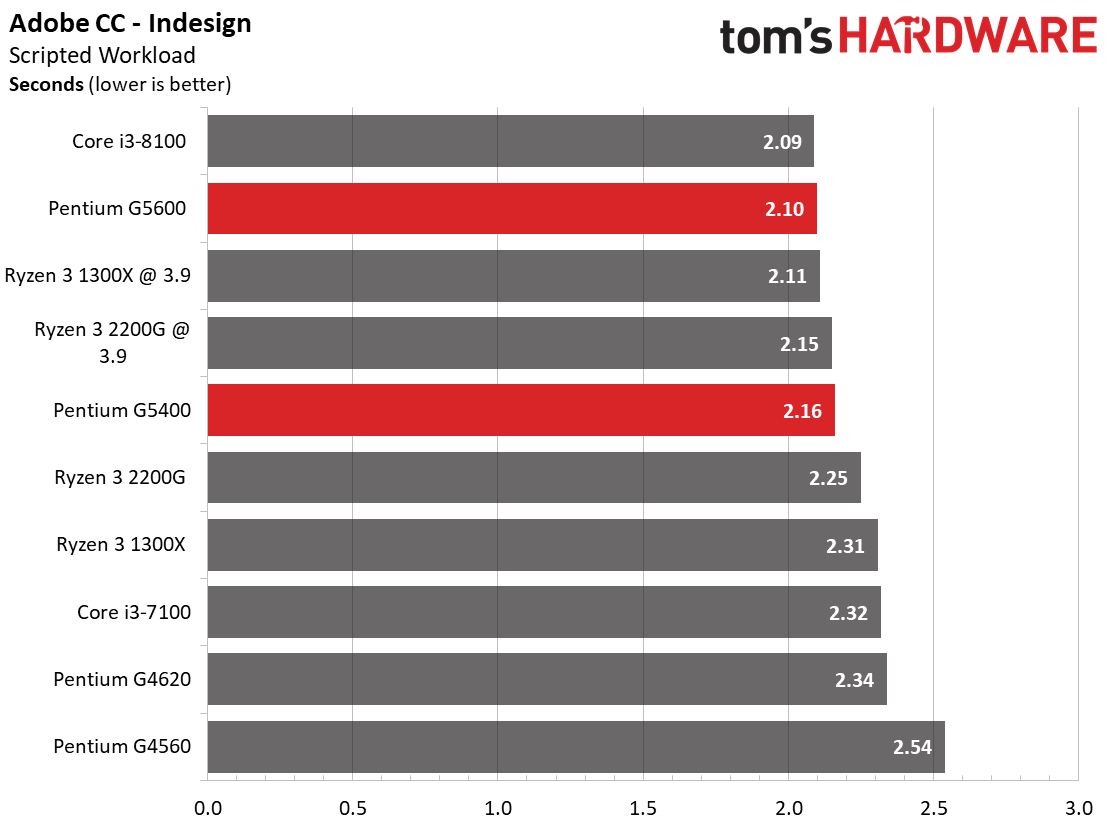
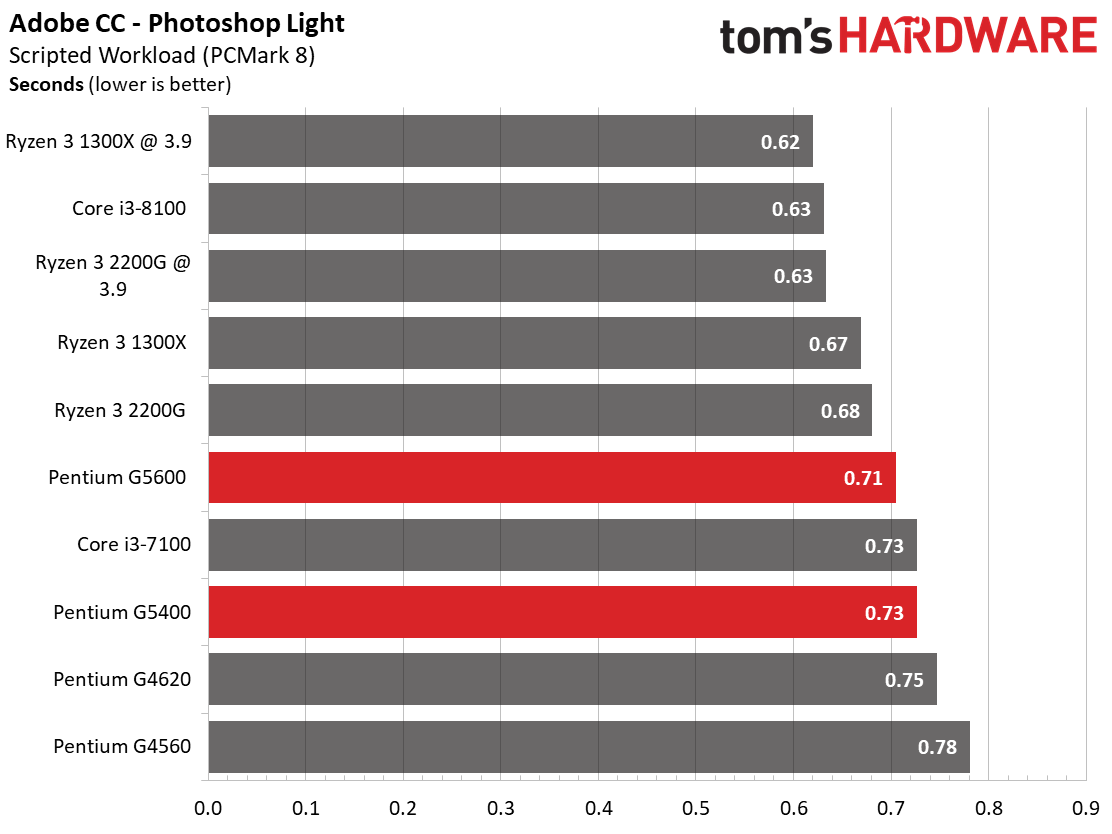
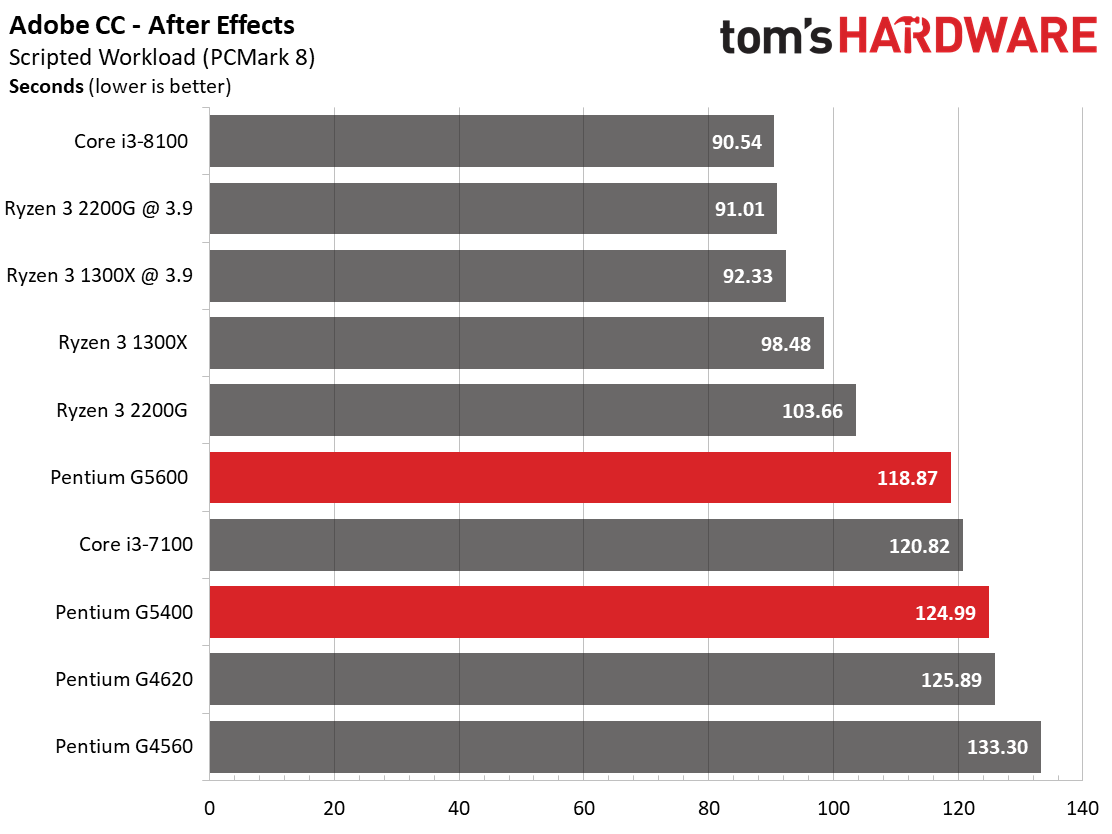

Adobe's Creative Cloud suite is weighted towards single-threaded performance, a strength of Intel's architectures. Nevertheless, Ryzen 3 2200G finished ahead of the Pentium Gold G5600 by a few points. Some of AMD's advantage in these tests come as a result of the Spectre and Meltdown patches that have a big impact on Intel's performance in the Adobe test suite.
Pentium Gold G5600 still carved out a sizeable lead in a few lightly-threaded applications, such as Illustrator and InDesign. But AMD's Ryzen processors excelled in the Photoshop and After Effects workloads.
Web Browser
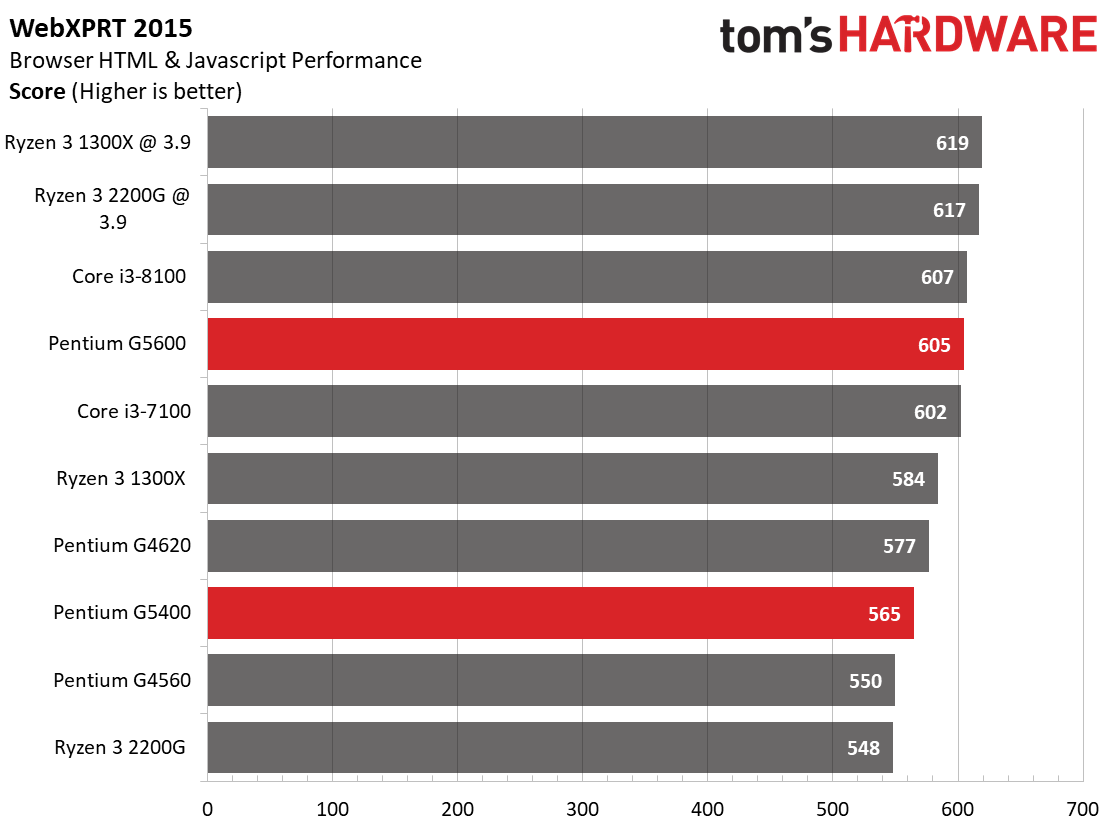
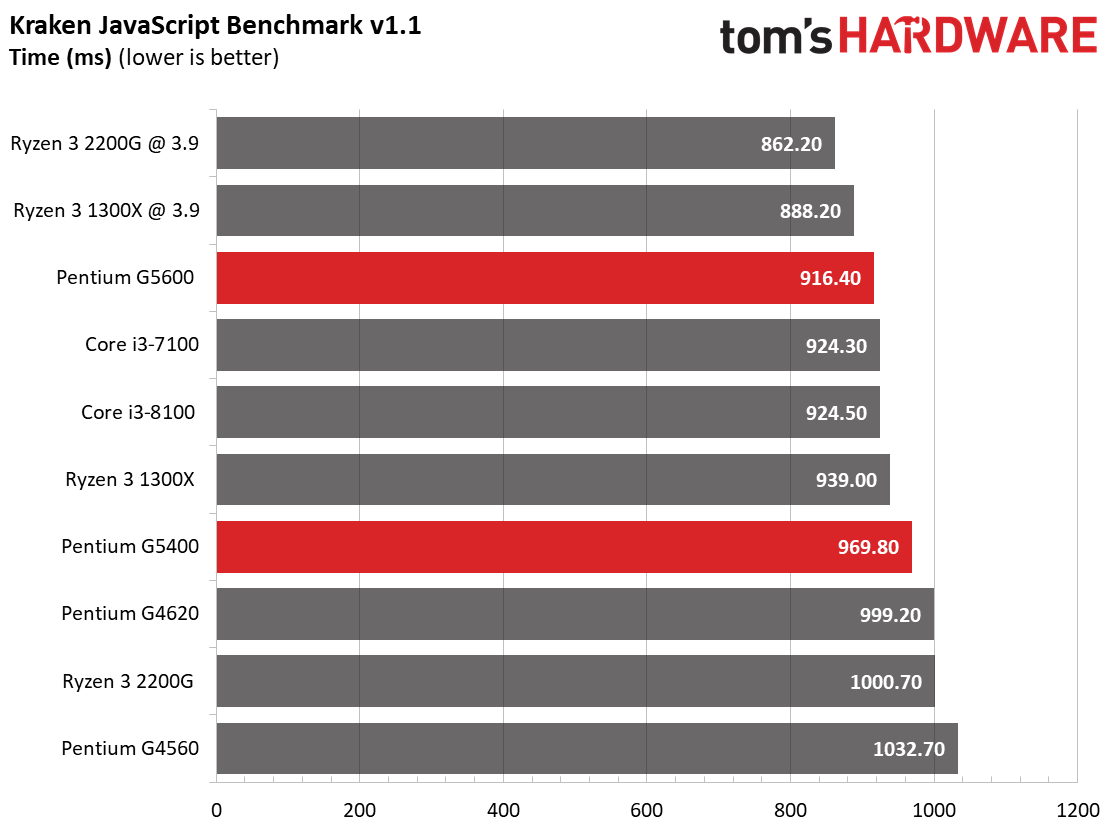

The Coffee Lake-based Pentiums performed better in our web browser tests, which respond most readily to per-core performance.
While AMD's processors weren't as impressive at their stock settings, overclocking changed the story dramatically in Krakken and WebXPRT. Intel dominated the MotionMark tests that emphasize graphics performance (rather than JavaScript).
Productivity
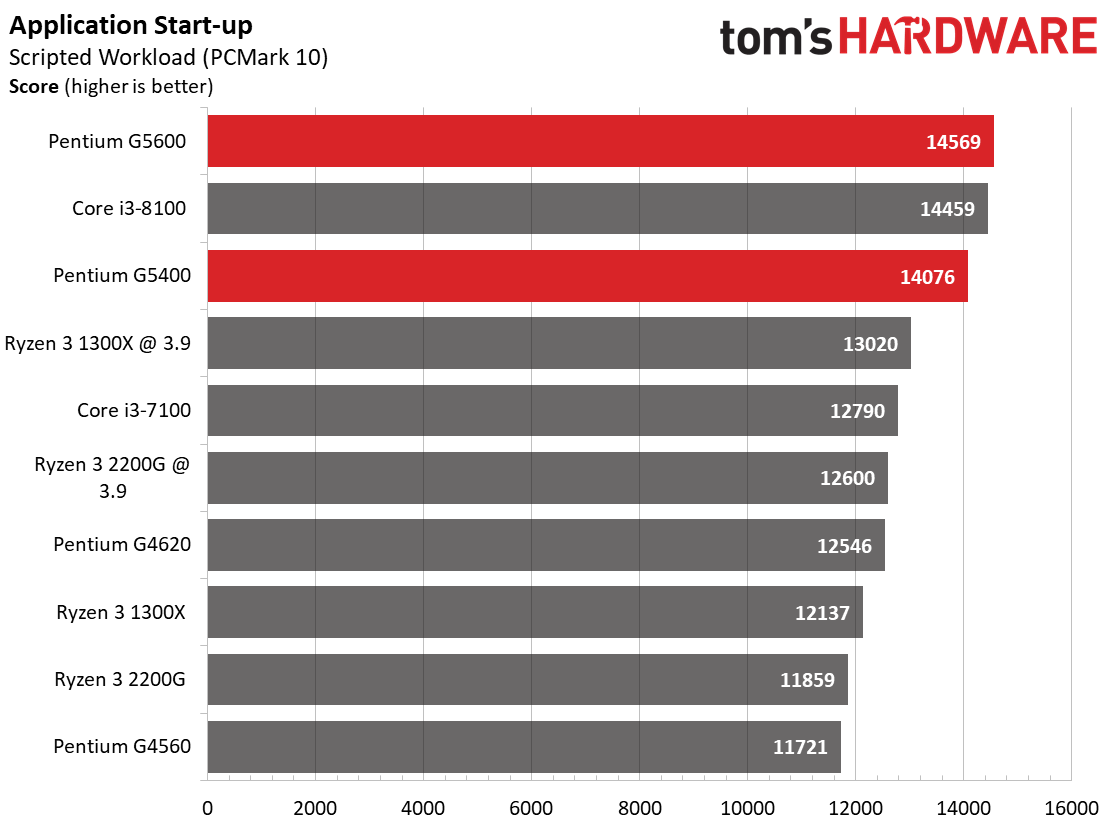
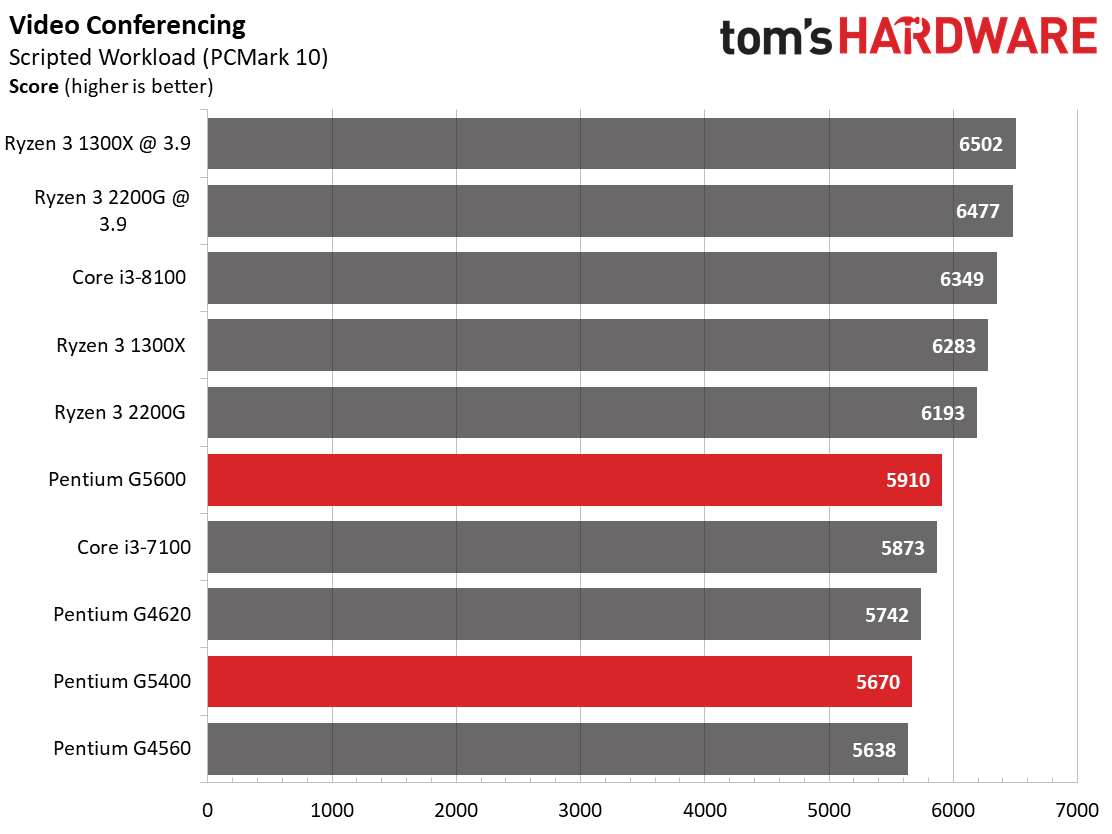

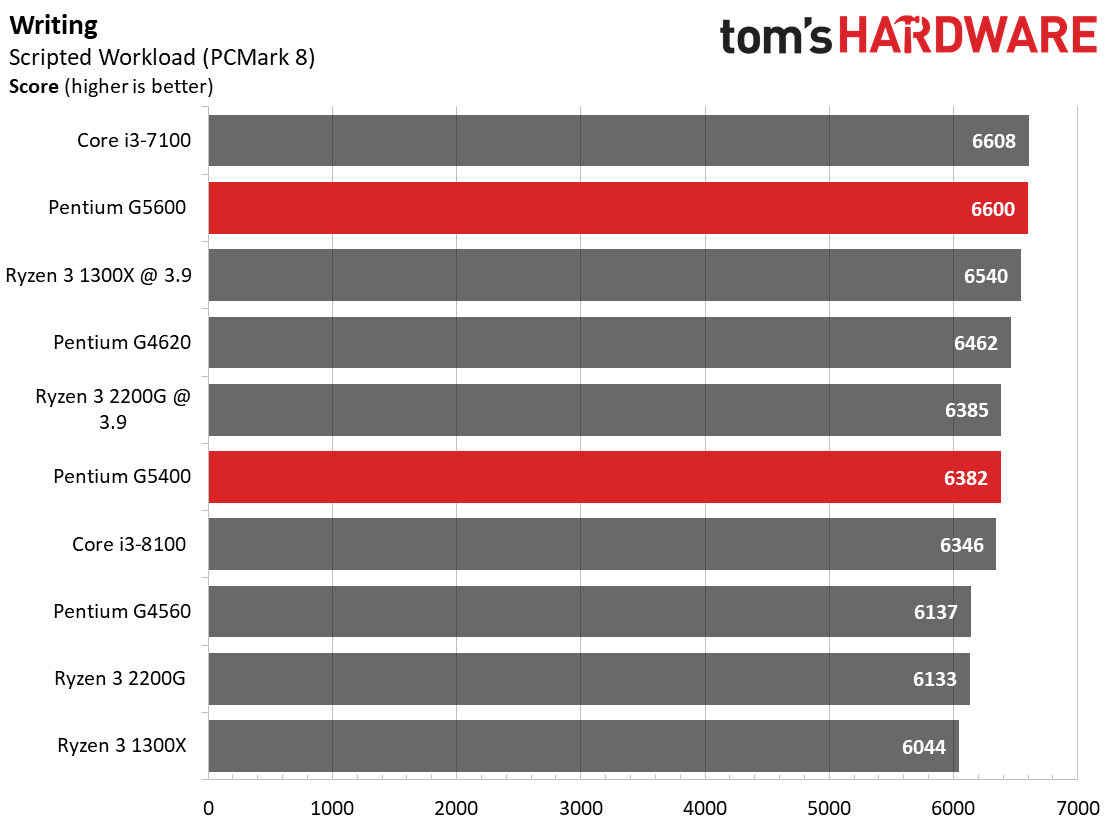
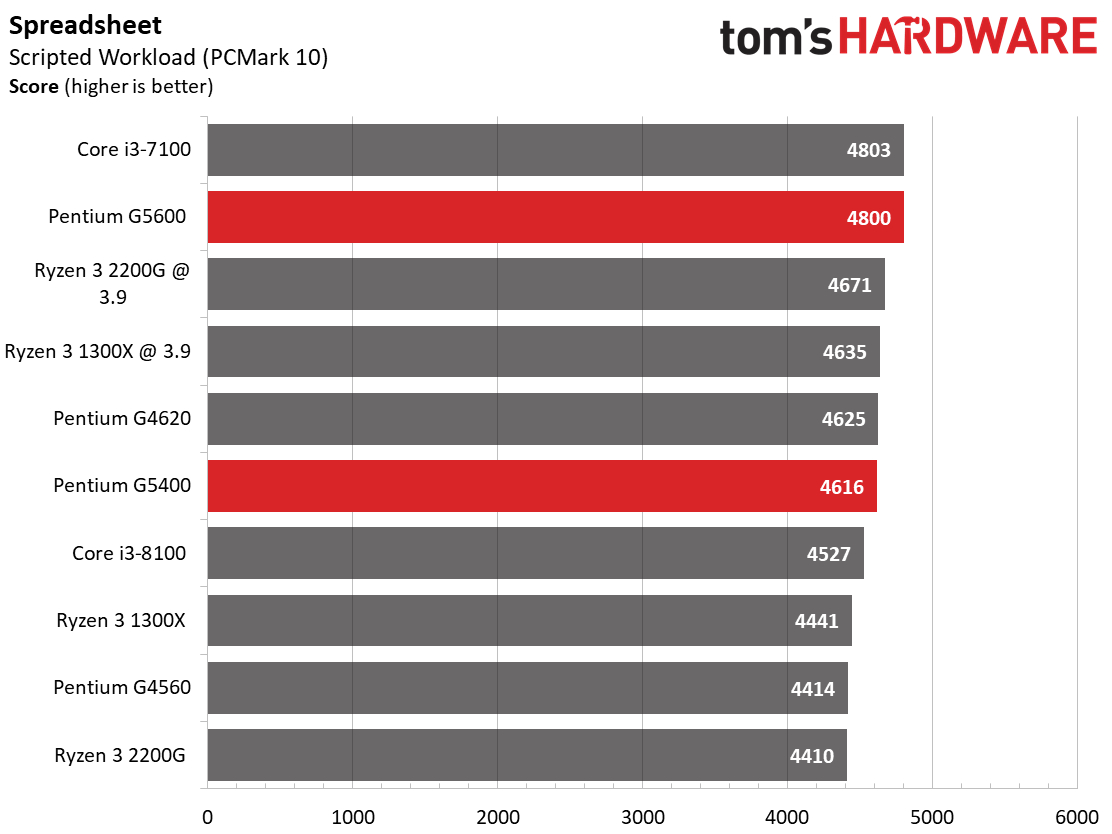
The application start-up metric measures load-time snappiness in word processors, GIMP, and Web browsers, under warm- and cold-start conditions. The Coffee Lake-based Pentiums took an uncontested lead and easily dispatched the previous-gen Core i3-7100.
Video conferencing measures performance in single- and multi-user applications that utilize the Windows Media Foundation for video playback and encoding. It also performs facial detection during the workload to model real-world usage. This task responds well to extra threads, so AMD's Ryzen 3 processors had no trouble establishing a lead over the Pentiums.
The photo editing benchmark measures performance with Futuremark's binaries that use the ImageMagick library. Common photo processing workloads also tend to be parallelized, so there was a big divide between the Pentium and Ryzen processors. A lack of support for AVX instructions compounded the Pentium's situation.
Get Tom's Hardware's best news and in-depth reviews, straight to your inbox.
MORE: Best CPUs
MORE: Intel & AMD Processor Hierarchy
MORE: All CPUs Content
Current page: Office & Productivity
Prev Page Shadow Of War & Project CARS 2 Next Page Rendering, Encoding & Compression
Paul Alcorn is the Editor-in-Chief for Tom's Hardware US. He also writes news and reviews on CPUs, storage, and enterprise hardware.
-
alchemy69 So you free admit in the first sentence that these chips are for people looking to build a sub-$500 system and so in the test rig you pair it with a GTX 1080?Reply -
logainofhades Reply21170547 said:So you free admit in the first sentence that these chips are for people looking to build a sub-$500 system and so in the test rig you pair it with a GTX 1080?
That is to show only CPU performance. You remove the GPU as a potential bottleneck. Benchmark review 101. -
TCA_ChinChin I think Intel did well in improving their pentium lineup. However, it would have been nice to see some more "real-world" examples like the pentium paired up with a gt-1030 and the r3-2200g with its built in graphics. Although testing without a GPU bottleneck will show absolute CPU performance differences (which is good), having some data more in context with the actual market segment of the product is also beneficial.Reply -
salgado18 I think the fact that they user a powerful GPU for CPU tests to remove bottlenecks should be in caps, bolded, in its own box. Every CPU review someone brings that up.Reply -
techy1966 Good review thanks. Using a good graphics card is a good way to show the CPU performance but it would have also been good to see all the CPU's also use their built in graphics chips. Which would have shown just how weak Intel's onboard graphics really is when compared to a AMD chip with built in graphics.Reply
For those that want to add a cheap graphics card to a low end Intel CPU system it will work well but if you do not want to do that then AMD's 2200G & 2400G CPU's are the only way to go if you want decent graphics performance on a tight budget. -
Paul Alcorn Reply21170900 said:Good review thanks. Using a good graphics card is a good way to show the CPU performance but it would have also been good to see all the CPU's also use their built in graphics chips. Which would have shown just how weak Intel's onboard graphics really is when compared to a AMD chip with built in graphics.
For those that want to add a cheap graphics card to a low end Intel CPU system it will work well but if you do not want to do that then AMD's 2200G & 2400G CPU's are the only way to go if you want decent graphics performance on a tight budget.
Here ya go, the Intel model isn't the same, but honestly it doesn't matter. Same UHD Graphics 630.
https://www.tomshardware.com/reviews/amd-ryzen-3-2200g-raven-ridge-cpu,5472.html
-
Nintendork When the 2200G APU (an i5 6600~) is at $89 you must be beyond blind to buy any intel cpu at that price bracket.Reply -
1_rick Reply21171365 said:When the 2200G APU (an i5 6600~) is at $89 you must be beyond blind to buy any intel cpu at that price bracket.
You can get the 2200G from Micro Center for $79, so it's even more off-balance. And that's been their online price for a while now, not just their in-store-only special. In light of that it seems like the G5400 is something you just should not get at all unless you really can't afford the extra $20 (Micro Center has the G5400 for $59) or you hate AMD. -
alchemy69 Reply21170631 said:21170547 said:So you free admit in the first sentence that these chips are for people looking to build a sub-$500 system and so in the test rig you pair it with a GTX 1080?
That is to show only CPU performance. You remove the GPU as a potential bottleneck. Benchmark review 101.
21170755 said:I think the fact that they user a powerful GPU for CPU tests to remove bottlenecks should be in caps, bolded, in its own box. Every CPU review someone brings that up.
I am well aware of the justification of this method but, imho, it is a nonsense metric. The raw power of the chip can easily be benchmarked with synthetics. Running game benchmarks with a vastly overpowered GPU is merely exchanging one bottleneck for another. What are you really measuring? How much this CPU bottlenecks the GPU in a given game. And who exactly is that information going to be useful to? If I'm reading the review of a new car I don't expect to see a discussion of how fast it could go if it was being towed by a Lambourghini.
